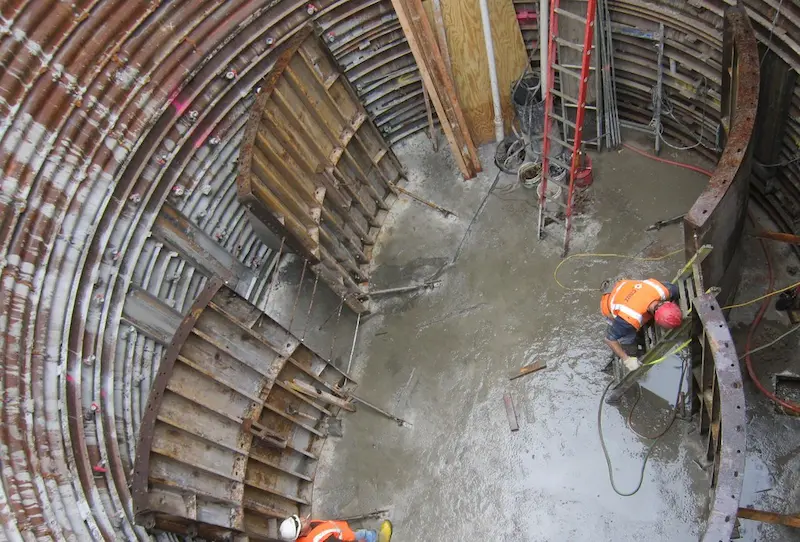Microtunneling is a technique that is used in the construction world and involves the excavation of a borehole to lay down pipes.
This construction tunneling process is often operated remotely by microtunneling contractors using specialized boring machinery (known as a microtunneling boring machine (MTBM)). This machinery can be operated from remote locations using a control panel.
The MTBM is mounted on top of a hacking frame that gets moved along the newly-dug underground hole using rigs.
Table of Contents
When is Microtunneling Used?
Microtunneling is a remotely controlled process that enables contractors to place pipes down that are larger in diameter and longer in length than the Jack and Bore method. Pipes ranging from as small as 50 inches in diameter up to 12 feet in diameter can be precisely laid using microtunneling.
Because microtunneling can be costly, it is often only used for pipes that require a high level of precision along long distances. This tunneling method is effective in soils that are soft and unstable.
How Does Microtunneling Work?
As we’ve mentioned above, microtunneling is a process that can be controlled remotely via a control panel. Contractors can operate the microtunnel boring machine efficiently to excavate the area.
In microtunneling, an underground hole is cut horizontally to enable the precise placement of pipelines. The idea is to leave the surface-level ground untouched as the underground hole is being created.
The drilling and laying processes often occur simultaneously in microtunneling. As the microtunnel boring machine drills horizontally underground, there is a jacking rig following behind to place down the new sewer pipe. The jacking rig lays the pipe between itself and the microtunnel boring machine.
The MTBM uses an automated system to guide the process and ensure a high level of accuracy and precision along far distances. It uses advanced digital technology that continues to offer innovative tunneling techniques for a wide range of uses.
Microtunnel boring equipment may use a gyroscope, laser guidance, and CCTV cameras to help the contractor dig the underground hole. The cameras and sensors guide the microtunneling operator and offer constant real-time feedback to enhance precision and accuracy.
What Steps Are Involved in Microtunneling?
Generally, the microtunneling process involves the following steps after planning permission and licensing have been organized:
- Sending and receiving pits are dug to a specific depth.
- The microtunnel boring machine is placed into the sending pit.
- The microtunnel boring machine is used to cut an underground horizontal hole and the jacking rig places the new sewer pipe into the newly dug hole.
- Both the microtunnel boring machine and jacking rig are removed.
- The newly laid sewer pipe is connected to the existing sewer system.
- The open pits are covered using steel plates and secured in place.
- The project is checked for quality control before being passed as complete.

